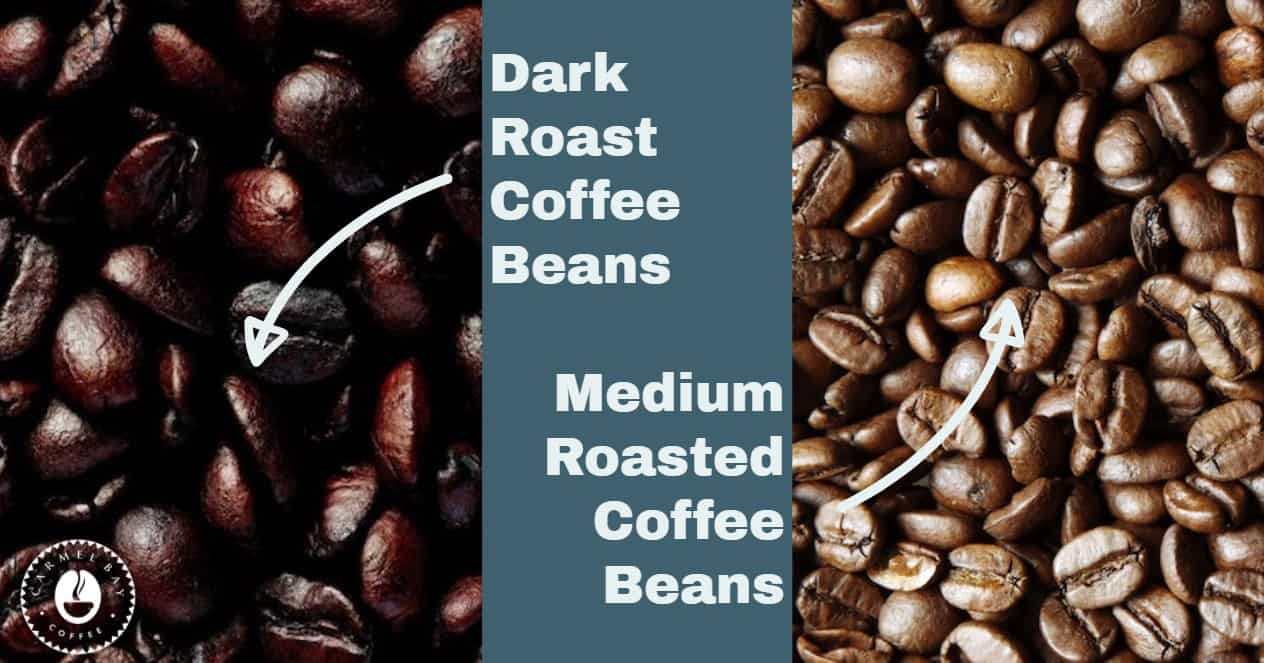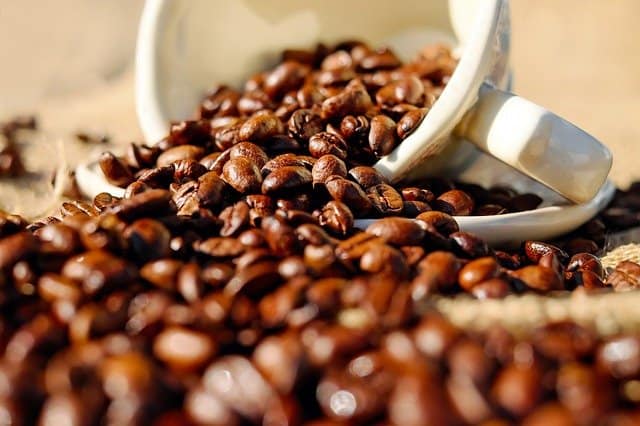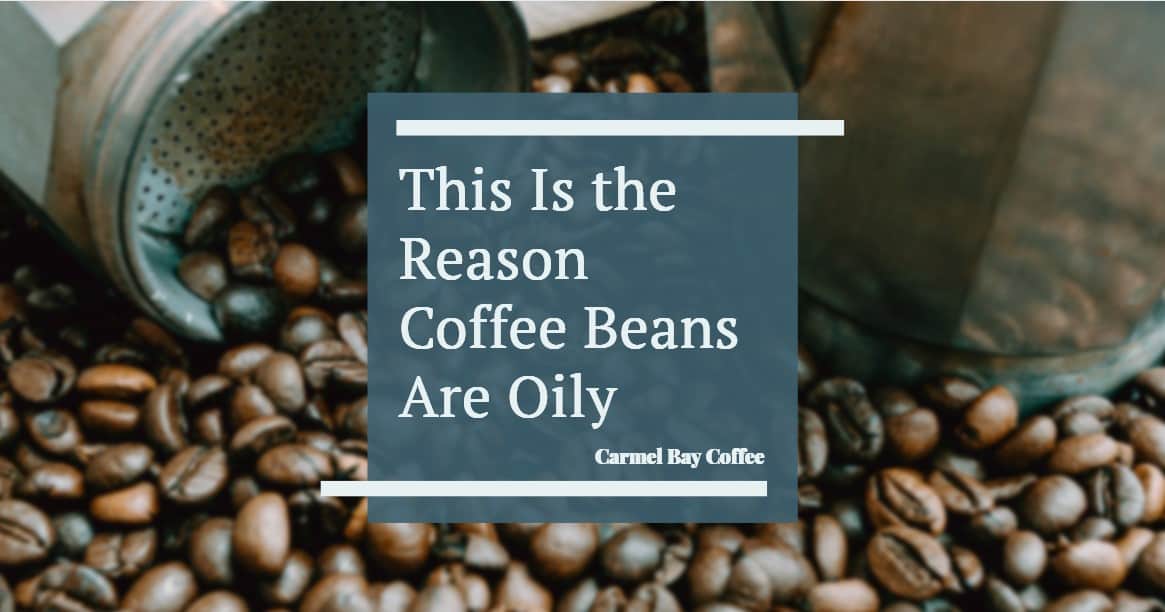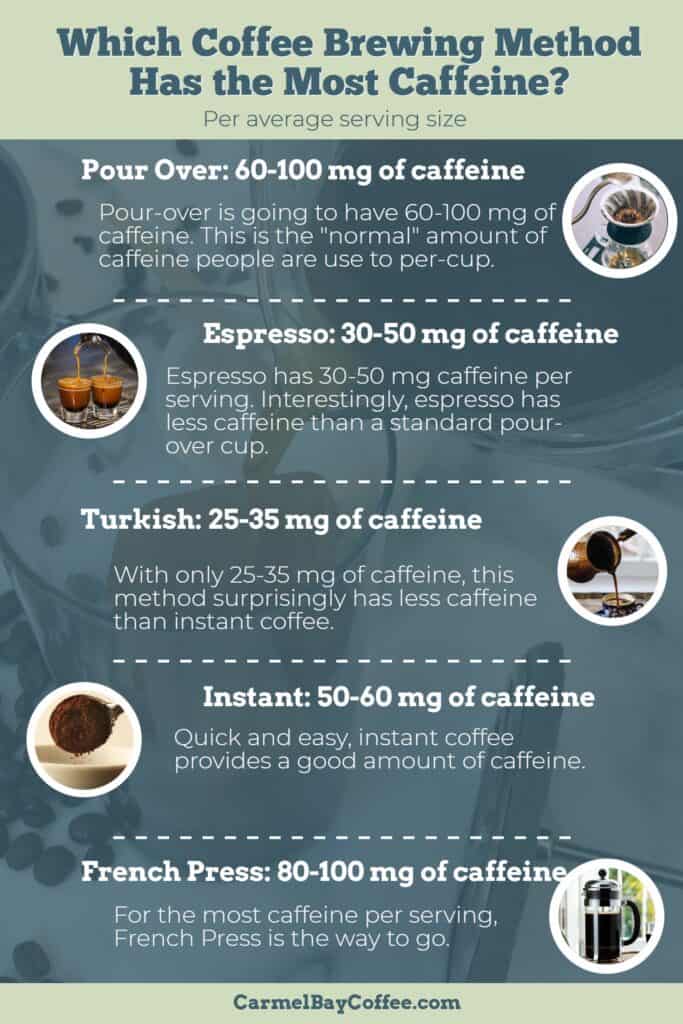You’re staring blankly at the bags of coffee on the grocery store shelf. You scan the shelves, left to right. You’ve decided on medium or dark roast coffee but they don’t have your usual coffee bean choice, and you’re in desperate need of coffee.
Not just any coffee, though.
Good coffee.
You want to be confident that you can choose a new bag of beans that you will enjoy. So, do you go with medium or dark roast coffee?
If you’re deciding on caffeine content, looking for some coffee that will get you up in the morning, stick to medium or light roast coffee beans.
Light roast has the most caffeine, but between medium and dark roast, the medium will definitely give you a better “buzz.” To sum it up, the lighter the bean, the stronger your cup of coffee. It seems a bit counterintuitive, but it’s the truth!
What Is the Difference in Coffee Roast

It can be tough to tell the difference between one roast and another! The options can be dizzying: dark roast, french roast, light roast, medium roast. The list goes on and on!
There isn’t a standard across the board as each roaster makes unique choices and adds their unique flair. From one coffee brand to another, the roaster and bean variety is different.
But, learning the difference between medium and dark roast coffee beans can help you define your preferences so that you can understand what makes them unique and choose a roast you’ll love!
Many coffee drinkers don’t realize that medium and dark roasts are different not because of the type of bean but because of the roasting process.
How long you roast a bean and the temperature a roaster chooses can dramatically influence the flavors that come through in the coffee.
The same beans, roasted differently, can take on different flavor and caffeine profiles.
It’s some coffee roasting magic!
Intrigued? Want to learn more? Here we break down what sets medium and dark roast coffee apart. We’ll explore how the roast type will influence caffeine levels. This will let you choose a coffee with both the flavor and the java jolt you need to start your morning right!
Are you looking to try something new with a coffee subscription? Check out our guide on the best coffee subscription available here.
Which Coffee Has the Most Caffeine?
Due to the longer roasting process, dark roast coffee has lower caffeine levels than medium roast beans.
This is because the longer the beans are heated, the fewer original flavors and caffeine levels will remain in the bean. Simply put: it gets cooked off.

Now, the average person might think that espresso is the most caffeinated coffee of all. You might be shocked to learn this is false!
While espresso definitely is a strong kick, espresso beans actually have less caffeine than light or medium roast coffee.
That’s because espresso beans are usually roasted for a long time, similar to a dark roast in many ways.
Light roast coffee often gets a “weak” reputation. Many people think that light roast isn’t as strong as other coffee types. This is simply not true.
Names can be deceiving!
Since light roast beans are roasted at lower temperatures (about 350-400 degrees Fahrenheit until the very first crack) and for a shorter amount of time, they tend to hold on to their distinct flavors. Plus, they keep the majority of their caffeine.
What is Medium Roast Coffee?

Medium roast coffee beans are typically brown in color (darker than a light roast). They are rarely oily and have a medium level of acidity. People tend to describe medium roast coffee as having a well-rounded flavor profile.
When a coffee roaster chooses a medium roast, it lets them preserve some of that specific bean’s unique flavors.
However, medium roast beans are roasted long enough that some caramel flavors and undertones begin to shine through.
This sets it apart from a light roast.
Medium roast coffee is typically roasted at temperatures around 400 degrees Fahrenheit. They are roasted just a little bit beyond the “first crack” but not to a second crack.
Light Roast Fact: A light roast is only roasted until that first crack and no longer!
The first crack (perfectdailygrind) is a literal cracking sound. This is caused during the roasting process. Pressure starts to build as the moisture inside the bean heats up.
When the pressure becomes too much, the bean shell will crack open. This is also when the coffee bean color changes into the brown hue that medium roast coffees are best known for.
What is Dark Roast Coffee?
Dark roast coffee is much darker in color than a medium roast– hence the name! A dark roast will have a very dark, almost black hue and lower acidity levels than light or medium roasted beans.
Typically dark roast beans will have an oily shine to them. This is a result of the roast process.
To see all the reasons for the oily shin, check out our article, Why Are Coffee Beans Oily.

Dark roast coffee is heated at much hotter temperatures. Roasters typically dark roast coffee beans at around 465 degrees Fahrenheit (coffeefeature) and they are roasted until the second “crack.”
This high heat and extended time pull out the bean’s oils and give it a more robust flavor.
Some roasters will roast and heat the beans at higher temperatures to cut down on the time before the second crack. However, most high-quality products are worth the wait, so it is best to steadily heat and roast the beans to gradually arrive at the sought-after second crack.
It’s a great reminder not to be in such a hurry.
Which Coffee Brewing Method Has the Most Caffeine?

If you are looking to brew the most caffeinated cup of coffee, it is essential to consider your brew method. There are lots of options available. You can choose:
- Drip coffee (60-100 mg caffeine)
- Pour-over (60-100 mg caffeine)
- Espresso (30-50 mg caffeine)
- Turkish coffee (25-35 mg caffeine)
- Instant coffee (50-60 mg caffeine)
Or the most potent caffeine levels of all: The French Press.
Not only is French Press coffee my favorite method to make coffee, it typically has about 80-100 milligrams of caffeine per serving. A french press brew requires that ground coffee beans be saturated with hot water.
Typically, you can let the hot water do its work for about 4 minutes. But, if you want it even more caffeinated, you can allow the water to sit for a few minutes longer.
You can also change the ratio of water to coffee grounds: the less water and more coffee grounds, the more bold the flavor and caffeine. You’ll get the desired effect and a more robust flavor!
Fun Fact: Were you as surprised as we were to learn that Turkish coffee actually has LESS caffeine than Instant Coffee?! Our minds were blown.
How Do Light, Medium Roast, and Dark Roast Coffee Taste Different?

All coffee beans have their unique flavors depending on the bean variety, the climate and altitude where they are grown, and various other factors. However, the roasting process truly sets them apart and changes how the same bean can taste.
- Light beans can sometimes have a citrus (kickinghorsecoffee) flavor
- Lighter beans are more acidic, while darker beans have less acidity
- Medium roast beans maintain most of their flavor with a bit of a sweet, caramelized taste.
- Dark roast beans are bold, intense, and rich in flavor due to the oils released.
- Some coffee companies try to disguise inferior quality beans with a dark roast, so pay attention to the roaster and look into their methods and quality first.
Light, medium, and dark roast coffees ensure there is something for everyone in the coffee world!
Whether you’re looking for something bright and highly caffeinated, or something intense and dark, there are so many different roasting techniques to ensure there is an option just right for you!
Wrapping Up
Next time a friend is looking for a quick jolt, you’ll be able to steer them towards a lighter roast and offer some impressive coffee FAQs in the process!
Never again will you be stuck, paralyzed by the many options on a grocery store shelf. We hope this information leaves you empowered to better interpret and translate coffee bean labels as you explore unique beans and roasts.
Also, let us know what do you prefer, light or dark roast coffee?

